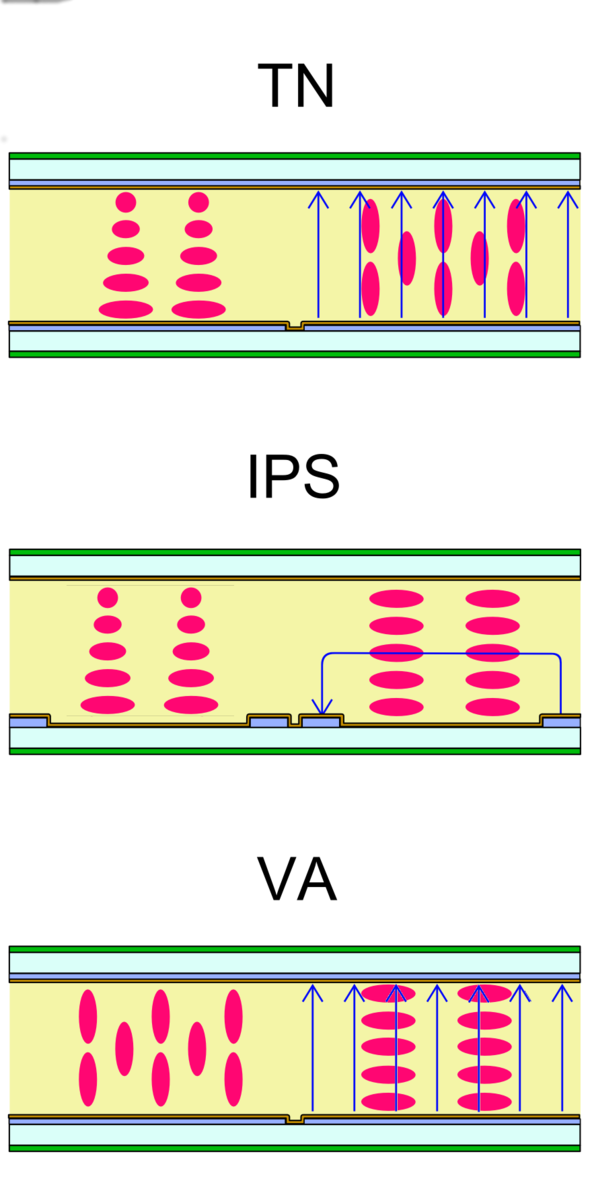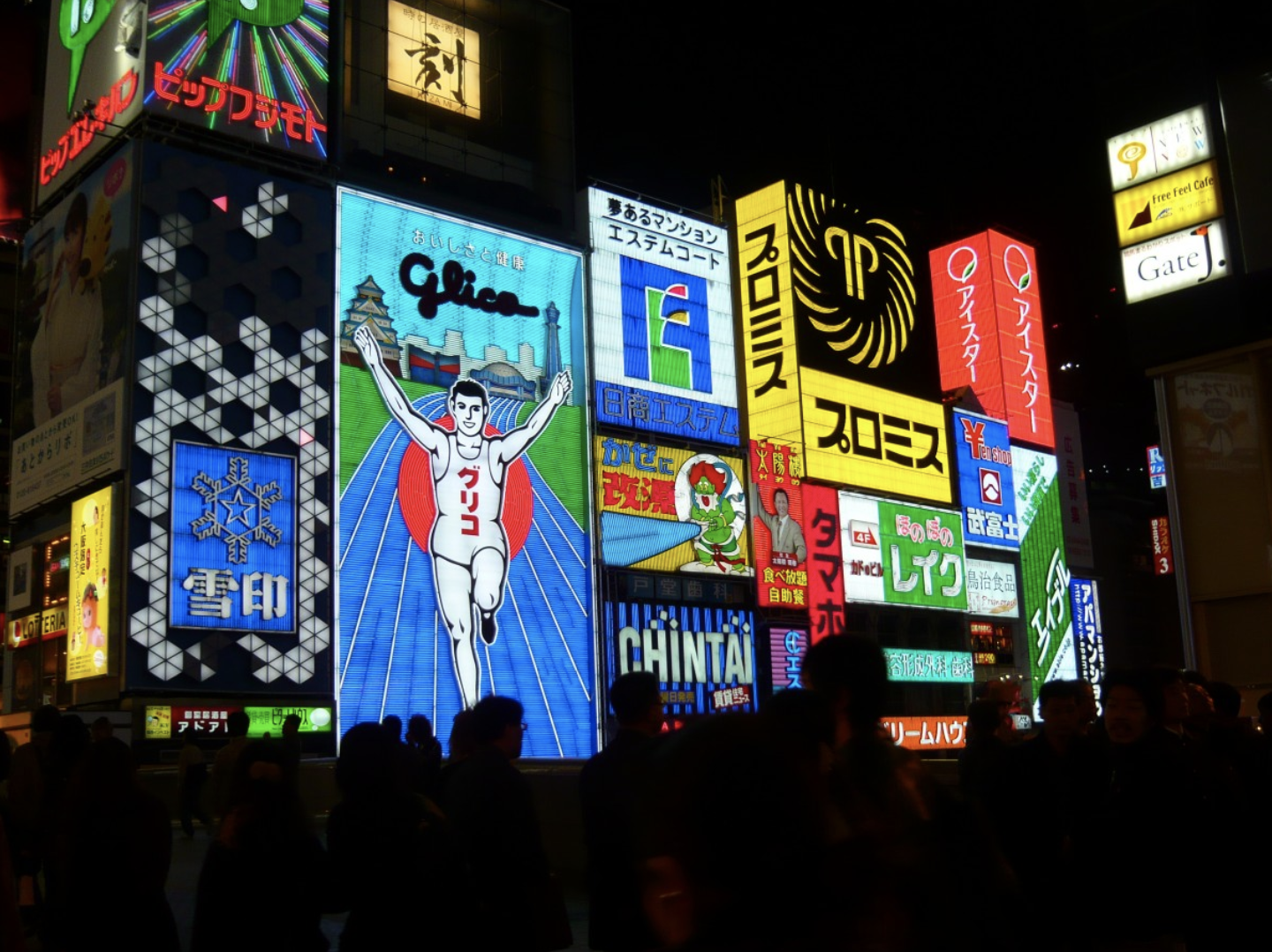Difference Between IPS and LED
The monitor is probably one of the most complicated and confusing peripherals to understand largely because of the fact that it demands a detailed knowledge of an insane amount of technical terms. What makes the situation worse is that these are acronyms which are in fact the source of confusion. Well, all these acronyms are associated with a monitor or a television display technology, but what a casual user, which is in fact the most people, would do when they look at so many options and are bombarded with technical jargon, with the likes of LCD, TFT, IPS, LED, and so on. We look at the two common display technologies in use today and explain the differences between the two to help you make better, informed decision when looking for a monitor.

What is IPS?
IPS (In-Plane Switching) is an improved, alternative solution to the conventional twisted nematic (TN) LCD panels. In TN panels, the applied electrical force is in the longitudinal direction. The LC directors are tilted which cause different phase retardation when viewed from left or right direction, which in turn produces a narrow and asymmetric viewing angle in the vertical direction. To overcome the viewing angle limitations of the TN panels, an alternative driving scheme using a traverse electric field was proposed and implemented in TFT LCDs. This driving scheme is often referred to as the IPS display. It is one of the major TFT LCD display technologies in widespread use today. In IPS panels, the liquid crystal molecules are aligned in parallel to the substrate plane. As a result, IPS panels offer much wider viewing angles than previous technologies while some high-quality IPS panels can display more than 1 billion colors, providing superior image quality over its TN and VA counterparts.

What is LED?
LED stands for light emitting diode and is a flat panel display technology that makes use of an array of light emitting diodes as a source of light. It is a next generation display technology based on crystalline semiconductors. LED is basically a type of backlight that emits light when an electric current is passed through it. To convert electrical to optical power, carriers are injected into the LED through electrodes, and then they recombine to produce light. LED displays consume less power, last longer, and are thinner, lighter and brighter than displays that use CCFL technology. Because of their self-emissive features, LEDs are commonly used for large displays, such as outdoor signage, traffic signals, automotive headlamps, aviation lighting, medical devices, and general lighting to replace incandescent light bulbs.
Difference between IPS and LED
Technology
– Both IPS and LED are flat panel display technologies. IPS (in-plane switching) is one of the common types of LCD panels. In fact, all IPS panels are LCD panels but not all LCD panels are IPS panels. In any case, IPS refers to the way molecules inside the liquid crystal of a display are positioned or oriented. In IPS panels, the liquid crystal molecules are aligned in parallel to the substrate plane. LED (light emitting diode), on the other hand, is a flat panel display technology that makes use of an array of light emitting diodes as a source of light.
Performance
– IPS is a screen technology for the liquid crystal displays widely known for their color accuracy and color reproduction. IPS display panels have the least change in brightness when the screen is viewed from different angles. But they are also expensive to produce, use more power, and have relatively longer response times than its counterparts. LED displays, on the other hand, consume less power and because they use light emitting diodes for backlights, they offer superior picture quality with better contrast ratio and brighter picture. This makes them an ideal choice for many laptop manufacturers.
Viewing Angle
– Viewing angle performance is the single most deciding factor when it comes to buying a PC monitor. IPS display panels demonstrate superior viewing angle capabilities, offering much wider viewing angles without any distortion or shift in colors when viewed from different angles. So, even when you’re not directly facing the screen, the display is not hampered in any way. LED panels demonstrate similar viewing angle characteristics with reasonable performance in the vertical and horizontal angular directions, with little or no degradation in picture quality.
IPS vs. LED: Comparison Chart

Summary
IPS is just one of several types of LCD panels; in fact, all the IPS monitors are LCD monitors but not all LCD panels are IPS panels. So, IPS basically refers to the alignment or position of liquid crystal molecules with respect to the substrate plane. IPS panels were made to improve upon the shortcomings of its predecessors, TN and VA panels. They do that by widening the viewing angle significantly while producing rich colors for an enhanced viewing experience. LEDs have been used for years, primarily in the electronics industry for circuit board lights. LEDs are widely known for their increased picture quality, lower production costs, and availability of a variety of colors.
- Difference Between Caucus and Primary - June 18, 2024
- Difference Between PPO and POS - May 30, 2024
- Difference Between RFID and NFC - May 28, 2024
Search DifferenceBetween.net :
Leave a Response
References :
[0]Soper, Mark Edward. The PC and Gadget Help Desk: A Do-It-Yourself Guide To Troubleshooting and Repairing. Indiana, United States: Que Publishing, 2014. Print
[1]Wu, Shin-Tson and Deng-Ke Yang. Fundamentals of Liquid Crystal Devices. New Jersey, United States: John Wiley & Sons, 2006. Print
[2]Lee, Jiun-Haw et al. Introduction to Flat Panel Displays. New Jersey, United States: John Wiley & Sons, 2008. Print
[3]Image credit: https://pxhere.com/en/photo/1559537
[4]Image credit: https://commons.wikimedia.org/wiki/File:Liquid_Crystal_Display_TN-IPS-VA_(ON%26OFF)_-_Copy111.png
